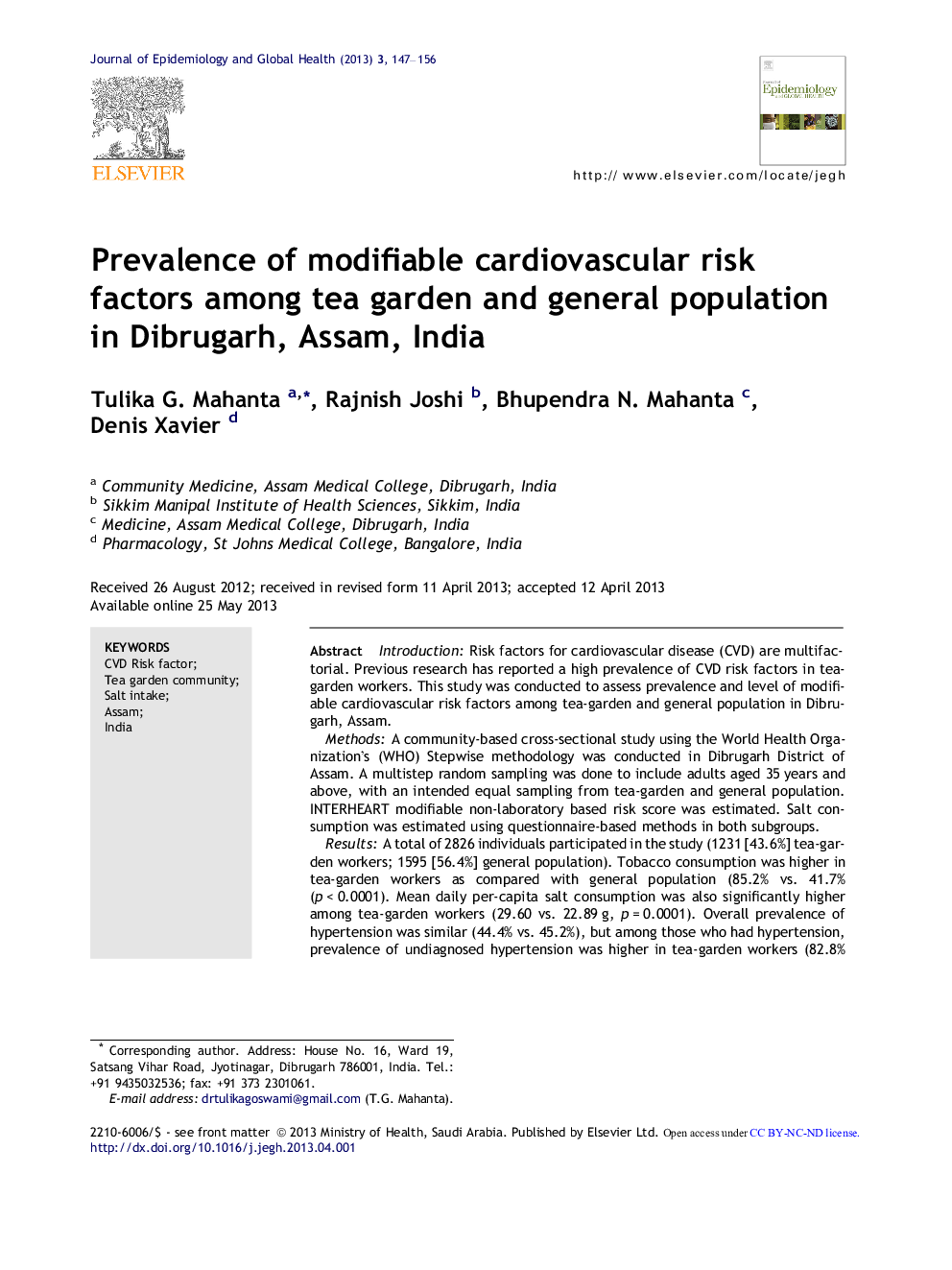| Article ID | Journal | Published Year | Pages | File Type |
|---|---|---|---|---|
| 3327666 | Journal of Epidemiology and Global Health | 2013 | 10 Pages |
IntroductionRisk factors for cardiovascular disease (CVD) are multifactorial. Previous research has reported a high prevalence of CVD risk factors in tea-garden workers. This study was conducted to assess prevalence and level of modifiable cardiovascular risk factors among tea-garden and general population in Dibrugarh, Assam.MethodsA community-based cross-sectional study using the World Health Organization’s (WHO) Stepwise methodology was conducted in Dibrugarh District of Assam. A multistep random sampling was done to include adults aged 35 years and above, with an intended equal sampling from tea-garden and general population. INTERHEART modifiable non-laboratory based risk score was estimated. Salt consumption was estimated using questionnaire-based methods in both subgroups.ResultsA total of 2826 individuals participated in the study (1231 [43.6%] tea-garden workers; 1595 [56.4%] general population). Tobacco consumption was higher in tea-garden workers as compared with general population (85.2% vs. 41.7% (p < 0.0001). Mean daily per-capita salt consumption was also significantly higher among tea-garden workers (29.60 vs. 22.89 g, p = 0.0001). Overall prevalence of hypertension was similar (44.4% vs. 45.2%), but among those who had hypertension, prevalence of undiagnosed hypertension was higher in tea-garden workers (82.8% vs. 74.4%, p < 0.0001). Tea-garden workers had lower BMI, were more physically active, and had a lower prevalence of diabetes mellitus and metabolic syndrome. Their INTERHEART modifiable risk score was also lower (1.44 [2.5] vs. 1.79 [2.8], p = 0.001).ConclusionHigh prevalence of modifiable risk factors like tobacco consumption, high salt intake and high prevalence of hypertension indicates the need for early implementation of preventive actions in this population.
